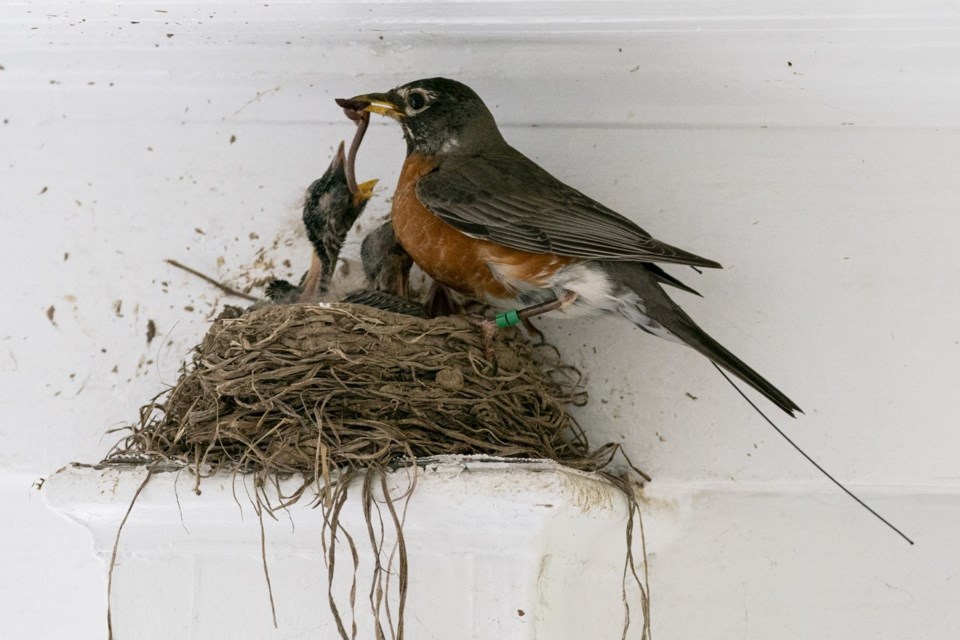A neighbor texted me this week asking for advice about controlling carpenter . She was hoping for an exterminator recommendation, but I gave her a simple, do-it-yourself solution that is easier on the wallet and environment, and even more effective.
It got me thinking about the importance of taking a beat to — and, if so, how much — rather than immediately reaching for a spray can or calling in the big guns.
We’re all familiar with like ladybugs, dragonflies and bees, but it’s high time we reconsider our definition of “pests” and collectively add other, less-familiar insects to the friendly bug list. Native beetles, assassin bugs and even wasps are among those that make significant contributions to the environment despite their threatening appearance.
Great Britain’s Royal Horticultural Society has even removed the pest designation from slugs and snails, typically considered garden menaces. As it happens, they, too, play an essential role in the ecosystem, consuming rotting vegetation and serving as an important , frogs and other animals, with some species even helping to control algae.
This shouldn’t come as a surprise — everything on Earth has a purpose, whether we realize it or not.
Fortunately, as gardeners learn more about the relationships between different life-forms, they are viewing insects as essential components of a sustainable landscape rather than nuisances.
I told my neighbor that the pesticide an exterminator would use in an attempt to eradicate her carpenter bees would also kill other pollinators and beneficial insects. Plus, those chemicals would need to be applied repeatedly to maintain control, hence the “service plan” upsell.
Carpenter bees are big and, to the uninitiated, scary-looking. But the males don’t have stingers, and the females only use theirs if they are blatantly disturbed. Still, they do “drill” holes in wooden surfaces.
What to do
I recommended sealing the holes with wood putty to prevent the bees from accessing their nests and force them to relocate. In addition, carpenter bees do not like painted surfaces, so painting bare wood would discourage hole-drilling in the first place (as well as protect it from the elements).
Spraying nest openings with almond or citrus oil, which the bees detest, also would provide an effective deterrent.
If you must act
Common sense should prevail, as particularly severe infestations might warrant a stronger approach. If so, seek out an organic control, such as diluted Neem oil, sprayed only after dark to avoid exposing pollinators. Homemade soap sprays made by mixing 1 tablespoon of dish soap into a quart of water can be used to control soft-bodied insects on plants, if necessary.
Planting will support native insects like ladybugs, lacewings and parasitic wasps.
Avoid planting the same crops in the same beds year after year. Rotating them will essentially starve pests that target specific plants, and provide a clean slate when you reintroduce them to the bed two or three years later.
And learn to accept some “pest” activity. A few leaf nibbles shouldn’t justify eradication. These measures should only be taken when a damage threshold is crossed. In many cases, it won’t be.
The circle of life
A single nest of baby birds consumes between 6,000 and 9,000 caterpillars, insects and worms in just their first few weeks of life. Encourage prospective avian parents to nest on your property by setting up a feeder and providing fresh, clean water. They’ll do a great job and work for free.
And that’s undoubtedly the best exterminator a gardener can hope for.
___
Jessica Damiano writes weekly gardening columns for the AP and publishes the award-winning Weekly Dirt Newsletter. You can sign up here for weekly gardening tips and advice.
___
For more AP gardening stories, go to .
Jessica Damiano, The Associated Press




